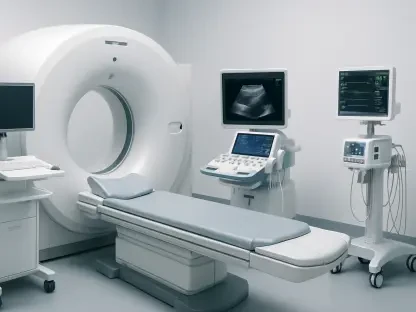Fixed version:
Imagine a scenario where a single question during a patient intake could transform the therapeutic experience for religiously committed individuals, significantly increasing their engagement in mental health care. Telehealth has already revolutionized access by eliminating geographical barriers, allowing patients to connect with clinicians from anywhere. However, for many, especially those with strong faith-based identities like Catholics, the next step is care that resonates with their moral and spiritual values. This concept, known as religiously concordant telehealth, focuses on honoring a patient’s beliefs and language, creating a bridge between clinical practice and personal identity. When clinicians understand and respect elements like sacramental life or virtue ethics, the difference can be profound—turning potential disengagement into meaningful, lasting progress. This approach integrates disciplined methods with secure technology to ensure healing aligns with a patient’s core beliefs, fostering trust and commitment in virtual care settings.
1. Understanding Religiously Concordant Care
Religiously concordant care in telehealth represents a form of culturally competent treatment that respects a patient’s faith commitments when explicitly requested. This is not about imposing beliefs or replacing evidence-based practices but rather integrating elements like meaning, duty, and community as protective factors in therapy. For Catholic patients, this might mean acknowledging their view of the human person as created in God’s image and called to holiness, translating into clinical strategies that support virtue and purpose. Studies, including randomized trials on religiously integrated cognitive behavioral therapy (RCBT), demonstrate outcomes comparable to standard CBT, with added benefits in spiritual well-being, particularly among more religious clients. Many of these interventions have been successfully delivered remotely, affirming their suitability for telehealth platforms.
The importance of this approach lies in its ability to enhance therapeutic alliance and engagement. When patients feel their faith is understood and respected, they are more likely to commit to treatment plans and share openly during sessions. This care model avoids proselytizing or acting as clergy, maintaining a clear boundary with evidence-based methods at its core. Meta-analyses further support that religion- or spirituality-tailored psychotherapies perform at least as well as secular approaches in reducing distress, often with a preference signal among faith-oriented individuals. Telehealth amplifies this by ensuring access to such tailored care regardless of location, making it a vital tool for underserved or rural communities.
2. Clinician Approach to Faith Integration
Delivering religiously concordant care requires a thoughtful stance from clinicians, centered on inquiry rather than assumption. The key is to ask patients about their faith preferences during intake, ensuring no preconceptions shape the therapeutic process. Questions like, “Do you identify with a religious or spiritual tradition, and if so, would you like it to inform your care?” open the door to personalized treatment without overstepping boundaries. This approach ensures that any integration of faith elements is patient-driven, respecting individual choices and maintaining clinical integrity in telehealth settings.
Equally important is the principle of offering without imposing. Clinicians should present faith-informed options alongside secular alternatives, allowing patients to decide what fits best at any given time. Documentation plays a critical role here—recording specific preferences and choices prevents overgeneralization and keeps the focus on individualized care. By maintaining transparency in how faith elements are incorporated, if at all, trust is built, and the therapeutic alliance is strengthened. This methodical approach not only protects professional boundaries but also ensures that virtual care remains a safe space for exploring personal values when desired.
3. Telehealth Advantages for Values-Aligned Care
Telehealth offers unique benefits for delivering religiously concordant care, particularly by overcoming geographical challenges. For Catholic patients in rural or underserved areas, accessing clinicians who understand their faith perspective no longer requires extensive travel. Secure, browser-based platforms aligned with HIPAA standards ensure that these virtual connections are both private and dignified, reducing friction for those hesitant to disclose sensitive spiritual matters in person. This expanded reach means that values-oriented care is available to a broader population, enhancing equity in mental health services.
Beyond location, telehealth adapts seamlessly to the rhythms of patients’ lives, which is crucial for maintaining engagement. Virtual scheduling can accommodate family commitments, parish activities, holy days, and fasting seasons, ensuring therapy fits into existing routines. Continuity is another advantage—barriers like weather, childcare, or commuting no longer disrupt progress. Additionally, designing telehealth for accessibility prevents discrimination, while frequent, short sessions support consistent skill-building. These elements collectively make telehealth a powerful tool for sustaining momentum in faith-aligned care, prioritizing both practicality and respect for personal beliefs.
4. Practical Workflow for Immediate Implementation
Implementing religiously concordant telehealth can begin with a straightforward week-one workflow adaptable to existing tools. Start with intake questions like, “Do you follow a specific religious or spiritual tradition? If so, would you like it to shape your care, and in what way?” and “Are there practices or days, such as Sunday commitments or holy days, that influence scheduling or treatment?” Use EHR checkboxes to note preferences for faith-informed options, secular approaches, or revisiting later. Informed consent should clarify that faith-based strategies, like virtue-focused goals or brief Scripture reflection, are available alongside secular equivalents, with patient choice documented at every step.
Session structure in telehealth can leverage digital tools for clarity—use a whiteboard to map thought records or habit loops, tying goals to virtues like prudence or fortitude. Ask questions such as, “How can fortitude show up this week?” to connect values to actions like gradual exposure tasks. Shared notes should include brief Scripture only if requested, always linking to clinical skills. Documentation must note that faith elements are patient-initiated, with clinical rationale and alternatives recorded. Finally, establish referral pathways to pastoral care for sacramental needs or specialty consults for issues like scrupulosity, ensuring clear confidentiality boundaries. This workflow enhances visibility and adherence in virtual care.
5. Enhancing Virtual Care with Tangible Tools
Making virtual care feel concrete is essential for patient engagement, and whiteboard exercises offer practical ways to achieve this. Techniques include thought tracking (situation to action plan), virtue planning (actionable steps for cardinal virtues weekly), habit cycles (cue to reward with reflection), and exposure steps (progressive challenges with scheduled practice). Each protocol focuses on visibility and repetition, critical drivers for adherence in telehealth. These structured activities transform abstract goals into manageable tasks, ensuring patients see clear progress even in a virtual environment.
Complementing these tools with human-centered language further bridges the gap in digital care. Statements like, “Virtual care doesn’t have to feel unclear. Let’s make your goal tangible so you can work on it like an athlete,” resonate with patients, fostering a sense of agency. This approach keeps sessions relatable and grounded, reinforcing the connection between clinical strategies and personal values. By combining visual tools with encouraging dialogue, clinicians can create a telehealth experience that feels as impactful as in-person care, driving motivation and commitment.
6. Maintaining Clinical Boundaries
Protecting both patients and clinicians in religiously concordant telehealth requires strict adherence to boundaries. Separate consent forms and records for different services, such as therapy and coaching, prevent overlap and ensure clarity. Avoiding cross-marketing during clinical time keeps the focus on care rather than promotion, preserving the integrity of the session. Transparency about licensure, scope of practice, and referral processes outside clinical encounters further reinforces trust and professionalism in virtual settings.
The significance of these boundaries cannot be overstated—they minimize dual-relationship risks and safeguard professional credentials. When patients see that their care is handled with clear distinctions and ethical rigor, confidence in the process grows. This trust is especially vital in telehealth, where physical distance can sometimes create uncertainty. Strong boundary practices ensure that faith integration, when requested, remains a supportive element rather than a source of confusion or conflict, maintaining the therapeutic alliance as a priority.
7. Role of Catholic Tradition in Therapy
When patients invite the inclusion of Catholic tradition, it can serve as a framework for meaning and moral reasoning without becoming a point of pressure. Examples include linking perseverance to relevant Scripture passages, connecting gratitude to liturgical seasons, or framing temperance in habit formation. These elements are always secondary to evidence-based clinical plans, ensuring that treatment remains grounded in proven methods. This balance respects patient autonomy while honoring their faith as a resource for healing.
For specific concerns like scrupulosity, clear lines must be drawn—clinical interventions address psychological aspects, while sacramental or moral discernment is referred to clergy. This delineation prevents overreach and ensures that telehealth care stays within its professional scope. By integrating tradition only at the patient’s request and maintaining rigorous clinical standards, clinicians can support holistic well-being without compromising the therapeutic process, fostering an environment of respect and effectiveness.
8. Measuring Impact with Key Metrics
Tracking the effectiveness of religiously concordant telehealth involves simple, actionable metrics to gauge progress. Engagement can be assessed through attendance rates, cancellation frequencies, and session completion percentages, reflecting patient commitment. Symptom changes should be monitored using standardized tools like the PHQ-9 for depression or GAD-7 for anxiety at regular intervals. Patient-reported fit, measured by statements such as “My clinician respected my faith commitments” on a Likert scale, provides direct feedback on cultural alignment.
Additionally, process fidelity—checking the percentage of session notes that include consent language for faith integration—ensures consistent application of protocols. Summarizing these data points on a one-page dashboard allows for quick insights, with workflows refined every 90 days based on findings. This systematic approach to measurement not only validates the impact of concordant care but also identifies areas for improvement, ensuring that telehealth remains responsive to patient needs and clinical standards.
9. Real-World Application Through Case Studies
Consider a composite case of a Catholic college athlete who sought telehealth for panic attacks before competitions, specifically requesting a faith-informed approach. Over secure video sessions, an exposure staircase was developed to address pre-game triggers, paired with a whiteboard routine labeled with virtues—prudence for planning, fortitude for breathing exercises, temperance for caffeine limits, and justice for team duties. A brief Scripture passage, chosen by the patient, was tied to calming techniques before exposures, enhancing personal relevance.
Within six weeks, panic frequency and intensity notably decreased, while adherence and confidence improved. The interventions remained rooted in standard cognitive behavioral therapy (CBT) and exposure techniques, but the framing honored the patient’s Catholic identity, strengthening the therapeutic bond. This example illustrates how telehealth can blend evidence-based care with personal values, creating a tailored experience that drives measurable outcomes and sustains engagement in a virtual format.
10. Addressing Common Questions
Frequently asked questions about religiously concordant telehealth clarify its application and limits. Is this approach suitable for every Catholic patient? No—options should always be offered, never imposed, with respect for those who prefer strictly secular language. Regarding training, competence is essential; clinicians should seek consultation or supervision specific to faith integration and recognize when to refer. Platforms must be HIPAA-compliant, browser-based video solutions with strong encryption and a Business Associate Agreement to ensure security.
Another common query is whether Scripture can be used in sessions. The answer is yes, but only at the patient’s request, kept brief, and directly tied to a clinical task, never as a substitute for treatment. These guidelines ensure that faith-informed care remains ethical and effective, addressing patient needs without crossing professional boundaries. Such clarity helps clinicians navigate this specialized area of telehealth with confidence, maintaining focus on evidence-based practice.
11. Reflecting on the Path Forward
Looking back, telehealth proved to be a game-changer in expanding access to psychotherapy and coaching, breaking down barriers that once limited care. Religiously concordant approaches added a vital layer, grounding care in patients’ values and fostering deeper engagement. Clinicians who practiced with an emphasis on privacy, clarity, and compassion demonstrated that for Catholic patients, healing and holiness were not opposing forces but complementary aims. By employing evidence-based tools within firm boundaries, virtual care became a space where the whole person was respected. Moving forward, the focus should be on refining workflows through data-driven insights and ensuring accessibility for all, so that this model continues to evolve as a trusted resource for those seeking alignment between faith and mental health.









